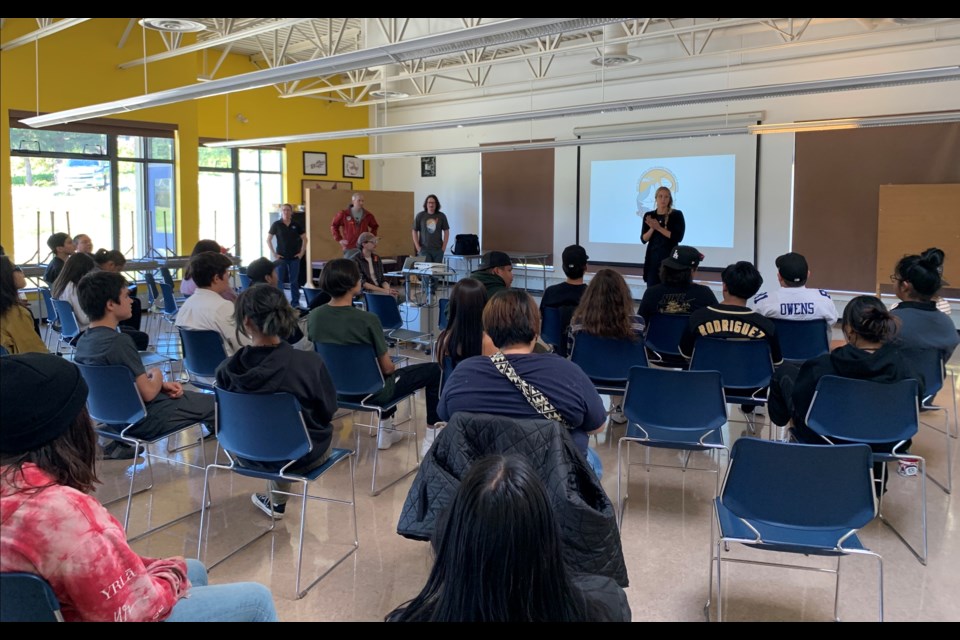What can volcanic mountains like Mount Meager teach us about space? According to NASA scientists, more than you might think.
A team of 13 scientists, graduate students, and support personnel recently arrived in the Pemberton Valley to research Mount Meager, where they are applying mountain research to help expand our understanding of space.
The Mount Meager massif, about 65 kilometres northwest of Pemberton, is one of Canada's largest and most geologically active volcanoes, with numerous landslides and a couple of active hot springs—all of which point to its dynamic nature.
The scientists spent a few days at Meager earlier this month to further understand how life develops in an analog environment similar to those found on the Jupiter moon Europa, which may potentially hold life within.
“Mount Meager can tell us a whole lot about space because it’s an analog environment, which means it has some properties that are similar to other moons and other places in our solar system,” said NASA scientist Morgan Cable.
“We can study its chemistry, its potential to hold life and the kind of life it hosts.”
On Wednesday, Sept. 21, Cable, along with fellow NASA scientist Mike Paton and caver Christian Stenner, presented to students at Signal Hill Elementary, Pemberton Secondary and Xet̓ólacw Community School.
In their presentations, the scientists explained their work, and how the volcanic complex can help further our understanding of space.
Paton is a robotics engineer that has been working with a team at NASA to build a robotic system known as an Exobiology Extant Life Surveyor (EEL). The EEL is a long snake-like machine that can move through ice and glacial surfaces to explore deep fissures and crevices in the ice.
Glacial environments like Mount Meager are perfect places to test these sorts of devices, as they are similar to the environments where the machines will be used.
“We can use that to inform what sort of instruments [will be needed] for a future lander or robotic explorer. We can use it to test some of our robotic technologies to make sure they can move in challenging terrain,” Cable said.
The research project was funded by the National Geographic Society and the Trebek Initiative, and served as an opportunity for the scientists to conduct operation testing, where robotic prototypes are tested to work out some of the challenges that the robots may experience.
“We will do a real-time test in an environment and see what breaks, see what challenges we experience that we might not have predicted, and all of those things can help us get a much better chance of our actual real mission being successful and not encountering a problem we haven’t encountered before,” Cable said.
Cable was particularly enthusiastic about students getting involved in space exploration, as future generations will have to take over the current projects underway.
“I may start something that the next generation or even the one following will be the ones actually operating that mission on the surface of an alien world, and so it's important to get people who are just as inspired to come and work for NASA and join us in these discoveries,” Cable said.
“I’m hoping that kids get inspired like I did when I was an eighth-grade student,” Cable said.
Cable recommends that students interested in a career in space pursue internship opportunities with NASA and the Canadian Space Agency during their undergraduate college years.
Aside from providing fertile ground for research, the geologically active nature of Mount Meager has made it an attractive potential spot for a geothermal power plant, currently being explored by the Meager Creek Development Corporation (MCDC)—which also helped coordinate the NASA scientists’ visit, and the presentations in the schools.
MCDC is still on target to have both the power plant and hydrogen production up and running at Meager by 2025, said Craig Dunn, managing director of MCDC and president of WellDunn Exploration, in an interview with Pique earlier this month. Developers hope to begin drilling within the next 18 months.




